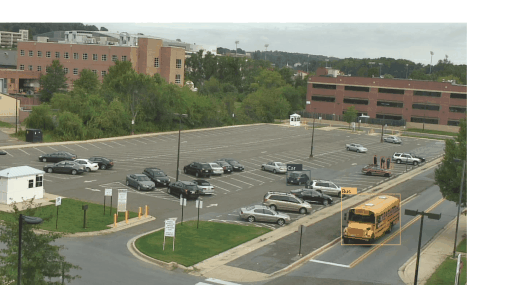
What AI makes VMS relevant in 2024?
In the highly saturated landscape of Video Management Systems (VMS), staying competitive requires adapting to diverse industry needs and budgets. The dynamic shift toward smarter, more autonomous systems has set a new benchmark for cutting-edge technology. AI functionalities have become pivotal in categorizing VMS to appeal to various sectors and at different operational scales.
In this blog post, we explore key AI features that keep VMS relevant in the increasingly automated landscape of the future.
Tier I:
Baseline AI Functionality for All VMS.
Every VMS operating in 2024 needs baseline AI functionalities to maintain relevance and efficiency. These foundational features include:
Smart Search Capabilities:
Efficiently locate specific video segments across extensive datasets by querying attributes such as object of interest (box, human, etc.), designated color, activity type, or location.
Automated Alerts:
AI-driven event detection that triggers alerts to operators for immediate attention based on predefined criteria, ensuring quick response to potential threats. A human or vehicle crossing a perimeter line is a good example here.
Basic Object Detection:
Identifying and classifying primary elements such as people and vehicles within video footage. While real-time analysis can be beneficial, it's not strictly necessary. Ultimately, the goal is to have an easy-to-review timeline to maintain focus on relevant sections of footage across all cameras.
Tier II:
Advanced AI Functionality.
For operations seeking enhanced capabilities beyond the essentials, Tier 2 AI functionalities offer significant benefits, making day-to-day operations smoother and more precise:
Real-Time Video Analysis:
AI processing and analysis of video footage in real-time promotes quicker response times and informed decision-making in critical situations.
Summarization and Incident Reports:
Summarizing video evidence and filing a report with all the key information within seconds save hundreds of hours, enabling security personnel to focus more on security rather than paperwork.
Automated Event Detection and Response:
Autonomously detect unusual events and initiate predefined response protocols. From tampering to unauthorized access attempts, these systems ensure immediate action, minimizing human error and response time.
Self-Learning Video Systems for Improved Accuracy:
For a long time, many have promised and failed to deliver much-needed field learning functionality. The core reason for such an undertaking is Hardware (HW) requirements. Since most VMS are built for on-premise deployment, they are unable to deliver a substantial improvement in AI performance over time, primarily because they don't have HW for AI re-training. We will delve deeper into this topic in our future posts.
Tier 3: Industry-Specific AI Features
Certain industries require specialized AI features to meet specific operational demands or regulatory requirements. These features cater to niche markets such as airports, subway systems, or industrial plants:
Data-Driven Insights:
These elevate the understanding of traffic patterns, peak activity periods, and essential metrics through intuitive information dashboards. You can also export this data to your preferred analysis tool, be it Excel, Looker, or Tableau, for a comprehensive, custom analysis.
Advanced Object Tracking:
In environments like airports, enhanced object tracking assists in monitoring suspicious items or baggage left unattended, ensuring comprehensive surveillance.
Advanced Behavioral Analytics:
AI-driven behavioral analytics can predict potential security risks by analyzing patterns and movements, transforming VMS into proactive rather than reactive systems.
Advanced Heat Mapping:
Provides visual maps of movement within a video frame over time, offering insights into high-traffic areas. This feature is especially useful in retail for aiding in layout planning.
Facial Recognition:
Identity verification serves as a crucial enhancement in sensitive environments, where cameras can be strategically placed at specific angles and heights. Prime examples include airport boarding gates or integrated access control systems where doors and cameras are positioned to directly face visitors.
License Plate Recognition (LPR):
Critical for transportation hubs, LPR technology aids in traffic management and vehicular access control.
Crowd Management:
AI tools that analyze crowd patterns and density to prevent overcrowding and ensure public safety in large venues and events.
Thermal Imaging and Anomaly Detection:
Essential for industrial settings, these features detect unusual heat patterns that could indicate equipment malfunctions, preventing accidents, and ensuring plant safety.
Predictive Maintenance:
AI can predict equipment malfunctions based on video and sensor data analysis within a monitored environment, enabling preemptive maintenance actions to minimize downtime.
The integration of AI into video management systems is not just an enhancement; it's a necessity to stay relevant in the rapidly evolving technological landscape of 2024. By adopting these AI features, organizations can not only enhance efficiency but also pave the way for future advancements.
Interested in upgrading your VMS with AI functionalities tailored to your industry needs?
Contact us today to learn how our tier-based AI solutions can keep you ahead in 2024.

.jpg)








